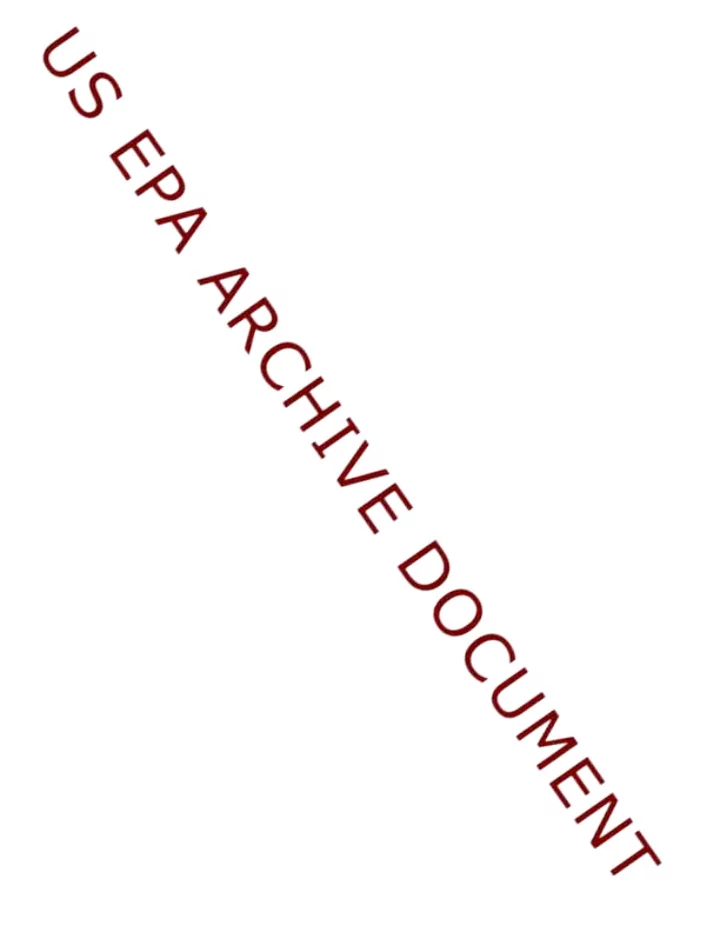

STAR Carbon Geosequestration Projects Progress Review Barbara Klieforth National Center for Environmental Research Office of Research and Development US Environmental Protection Agency January 7, 2013
EPA & ORD Mission Environmental Protection Agency Mission: To protect human health & the environment. Office of Research & Development Mission: To conduct leading-edge research and foster the sound use of science and technology to fulfill EPA’s mission to protect human health and the environment.
National Research Programs • Homeland Security • Air, Climate & Energy • Safe & Sustainable Water Resource • Sustainable & Healthy Communities • Human Health Risk Assessment • Chemical Safety for Sustainability
NCER Mission & Goal Mission of the National Center for Environmental Research: To support high -quality research by funding the nation's leading scientists and engineers to improve EPA's scientific foundation for decisions. Goal: To compliment ORD’s research agenda through extramural research to provide the scientific foundation for EPA's regulatory activities and decisions
NCER’s Extramural Programs • Science To Achieve Results ( STAR ) – Targeted Research Grants through Requests For Applications – Competed Centers • Fellowship Programs – STAR Graduate – Greater Research Opportunities (GRO) Undergraduate • Small Business Innovation Research (SBIR) Contracts
NCER By The #s 180 Research grants awarded annually - 40 grants jointly with private sector partners Average of 120 fellowships (Grad and Undergrad) awarded annually to approximately 280 universities and nonprofit research institutions 600-750 active research grants, 300 fellowships and approximately 150 peer reviews managed annually by NCER staff of scientists and engineers
CO 2 Capture & Sequestration CCS may greatly reduce CO 2 emissions from new & existing coal & gas fired power plants, industrial processes, and other stationary sources of CO 2 . • Immediate potential as climate change mitigation technology As much as 3,600 billion tons of CO 2 could be stored underground in the United States and Canada alone • Large stationary sources worldwide emit approximately 13 billion tons of CO 2 per year • Key technology for achieving domestic GHG emission reductions
CO 2 Capture & Sequestration Geologic sequestration is the 3 rd step in CCS: 1. Capture of CO 2 from power plants or industrial sources 2. Transport of the captured and compressed CO 2 (usually in pipelines) 3. Underground injection and geologic sequestration, or permanent storage • Followed by monitoring to verify that the CO 2 remains permanently underground
CCS Protecting Underground Sources of Drinking Water New Class VI wells under the SDWA UIC Program • To protect USDWs • Requirements for appropriate siting, construction, testing, monitoring, funding, and closing. Greenhouse Gas Reporting Under the CAA, GHG reporting mechanisms for suppliers of CO 2 , and underground injection and geologic sequestration of CO 2 . • To monitor the growth and effectiveness of CCS as a GHG mitigation technology over time and to evaluate relevant policy options. Applicability under Hazardous Waste Laws . • Being considered
CO 2 Sequestration Research STAR RFA to support research on sound risk management strategies for the underground injection of anthropogenic carbon dioxide (CO 2 ) in subsurface geologic formations. Reduce risks to sources of drinking water, and improved safeguards for protection of public health and the environment. Capitalize on site characteristics to optimize storage and reduce risks http://epa.gov/ncer/rfa/2008/2008_star_gsc02.html
GS STAR Grant Projects • RA, Modeling, Field, Lab & in-situ work • Work began late 2009 • Modeling efforts ground-truthed with field studies • Highly leveraged with other efforts • $900K per project represents significant EPA commitment • Groundwater protection ties in to multiple EPA priorities
GS STAR Grant Projects Will Provide: • Optimal engineering metrics needed to minimize site-specific risks • Regional monitoring tools for decision-makers • Web-based interactive modeling for probability- based risk assessments • Parameters indicating suitability of geologic formations
GS STAR Grant Projects • U Illinois Urbana-Champaign (Roy, Mehnert, Benson); hydrodynamics of fluid flow, pressure monitoring for leak detection • Clemson U (Falta, Benson); Exsolution of CO2 • U. Texas Austin (Nicot, Hovorka); site-specific monitoring, drinking water suppliers’ education • Princeton (Celia, Nordbotten); probability-based risk assessment and hierarchical modeling framework, space-time pressure perturbations • U. Utah (McPherson, Deo); Integrated engineering designs, modeling, monitoring of natural tracers ( ⁴ He) • Colorado School of Mines (McCray, Maxwell, Sichler); Geochemical reactions between CO2, aquifer fluids, and minerals. • Columbia U (Goldberg, Matter, O’Mullan , Slute, Takahashi); CO2 leakage effects on microbiology and biogechemistry
Recommend
More recommend